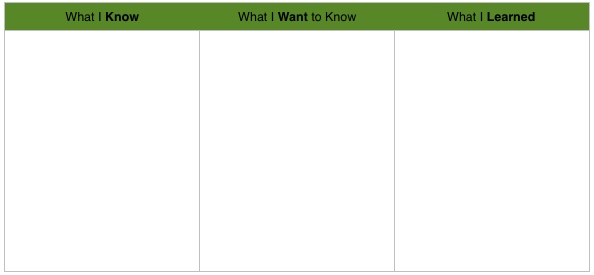Last week I learned a new term in education: AppSmashing. It's the concept of using multiple apps to create some sort of spectacular project or product, and it's a popular idea with teachers integrating technology in the classroom.
Advance organizers are the old school yin to 21st century learning's yang. David Ausubel's concept, which can be a little abstract (but that's part of the appeal), gives students a baseline for their learning, frequently being paired with more traditional methods such as lectures and readings. Advance organizers can be a visual tool like a Venn diagram or an oral prompt--anything that helps students begin to activate their knowledge bank so they can keep building on it.
Because the definition of advance organizers is broad, they are useful in many different settings: "Across all ages and ability levels, readers use their knowledge base as a filter to interpret and construct meaning from text passages" (Scheuerman, 2016). An elementary school teacher might use the classic KWL chart, seen below, to help students feel grounded in their base knowledge and ready to keep learning. KWL charts also come to life through class discussions prompted by the same questions, so the tool isn't restricted to a written format.
As I researched more about advance organizers, I found a lot of practical tools that could be used to the same effect as the KWL chart (most were visual but could be used in tandem with another strategy). ReadWriteThink is a fantastic resource, supported by the International Literacy Association and the National Council of Teachers of English, which I recommend mining for further resource treasure.
I think it's refreshing to continue to see appreciation and respect for some of the more classic teaching strategies--if we get too wrapped up in iPads and BrainPop videos, we risk missing simpler opportunities to help our students solidify their learning. And while I want to create a joyous, creative classroom environment, there will still be times that it just comes down to less exciting tasks: conjugating verbs in Spanish, memorizing certain essential algebraic equations, and learning the difference between their, there, and they're. It might not be the most dazzling moment of their day, but students will be so much more successful in the long run if the bricks have been laid.
References
Scheuerman, R. (2016). Session 4 Transcript: Advanced Organizers and Strategy Instruction.


No comments:
Post a Comment